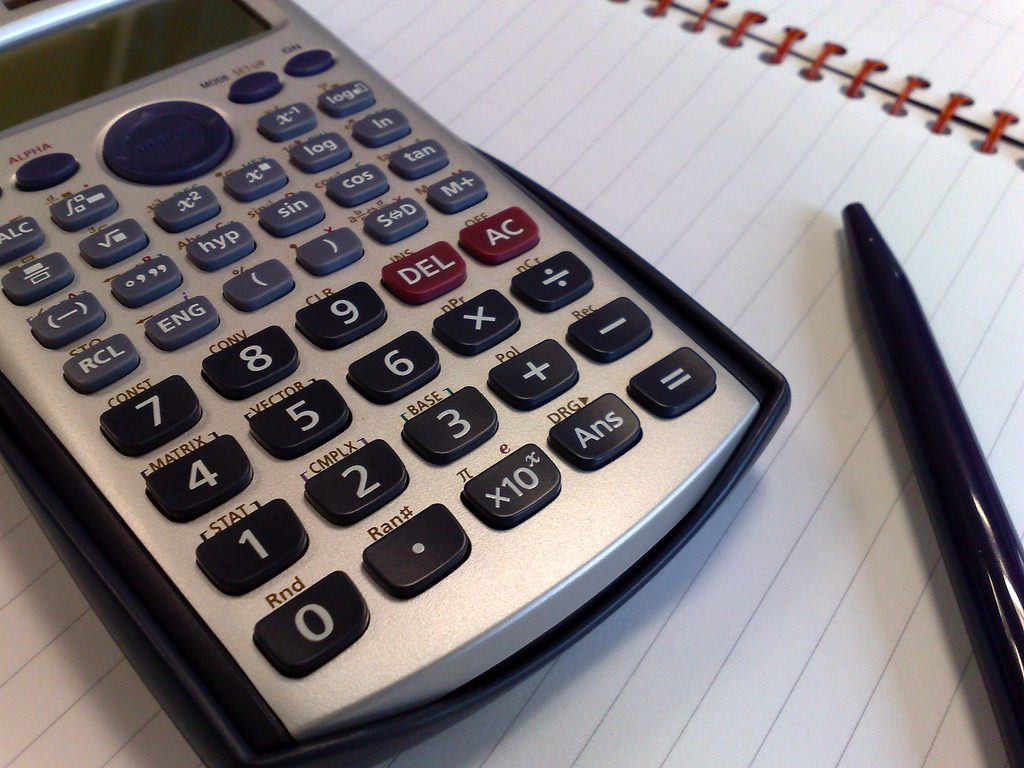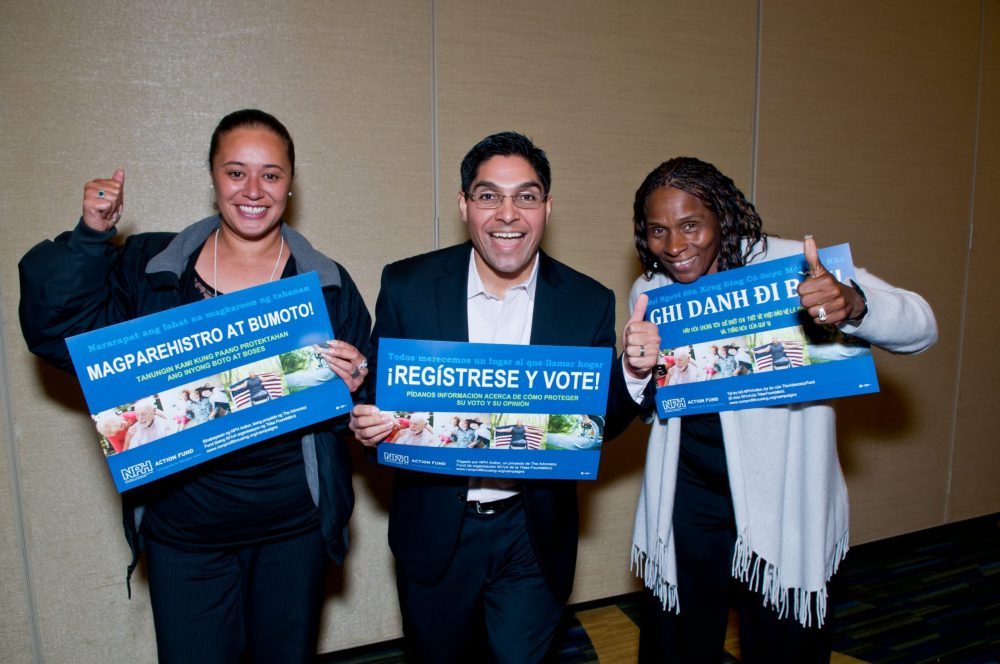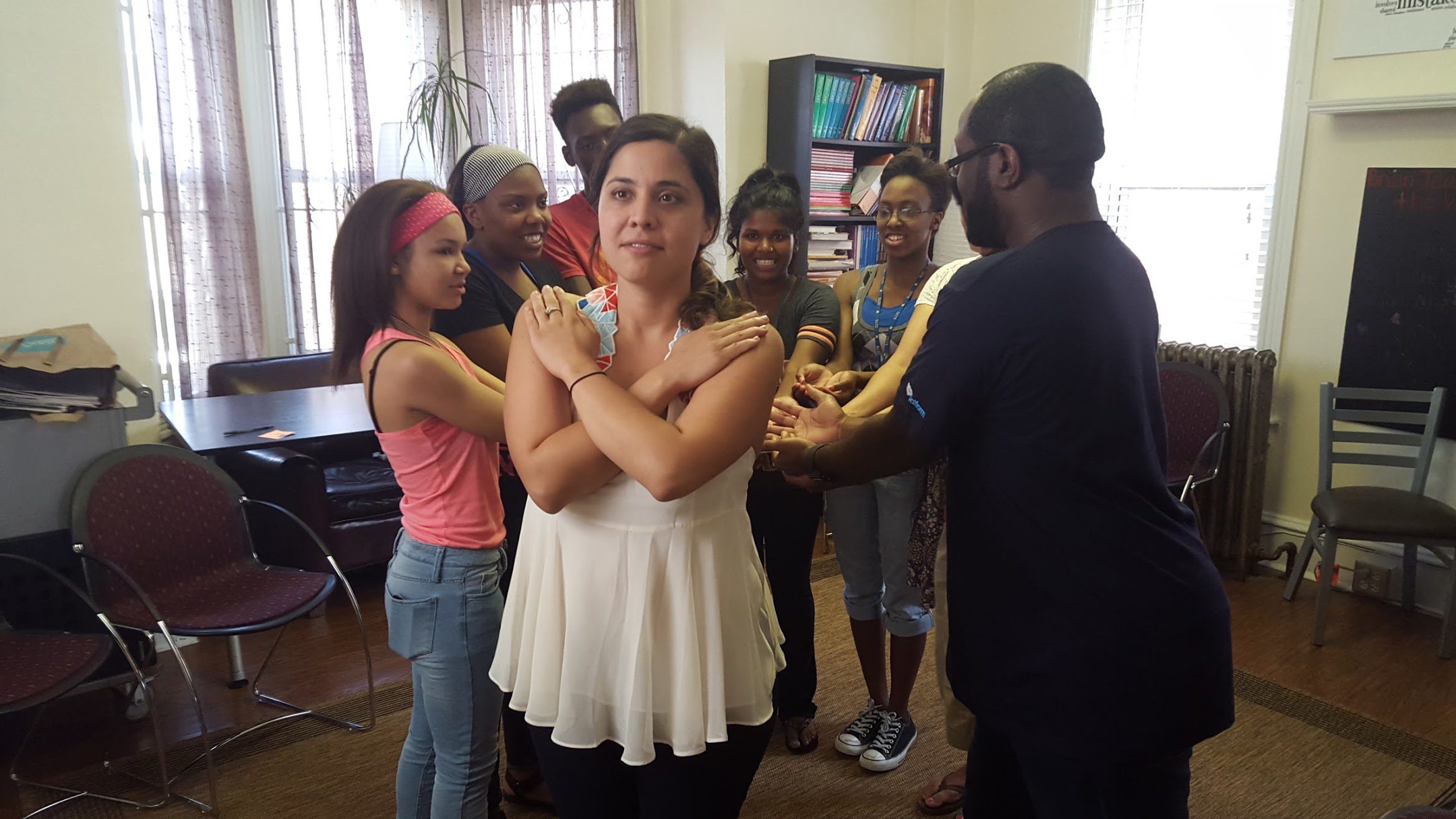
A doctor at the Daughters of Charity Health Center in New Orleans with her patient. Since 2015, the center and Southeastern Louisiana Legal Services have participated in a partnership to address the health and legal needs of patients. Photo courtesy of the Daughters of Charity Health Center
Sierra Barkgy knew nothing about legal aid lawyers until about a year ago. She was sitting in the waiting room at the Daughters of Charity Health Center in New Orleans when Elena Perez, a lawyer, walked in.
Perez announced that the health center had just launched something called a “medical-legal partnership,” and as a result, she now had an office at the clinic and could help patients resolve all sorts of legal issues, including those involving landlords and housing, public benefits, unemployment, taxes, and special education designation in schools.
Barkgy’s ears perked up. Shortly afterward, she pulled out the phone number she’d been given that day, called legal aid attorney Hannah Adams at Southeast Louisiana Legal Services (SLLS) and asked a few questions about a matter concerning her child. Though Barkgy didn’t pursue that issue any further, the brief connection with Adams proved to be a lifeline.
At the time, Barkgy was working as a bank teller and using a Housing Choice Voucher, commonly known as Section 8, to help pay rent on her apartment, half of a shotgun double in New Orleans.
But after her water bill jumped to $1,000 for two consecutive months, she called a municipal water inspector, who came to the house and found that the high bills were the result of a leaky toilet. “It’s not your fault,” the inspector told Barkgy, who complained to her landlady, demanding repairs.
The next month, Barkgy sent her rent with her neighbor, who had the same landlady. But the landlady rejected the payment and instead retaliated by filing for eviction. Barkgy called Adams, who convinced the neighbor to testify that the landlady’s grounds for eviction—unpaid rent—were untrue. And because Barkgy found it nearly impossible to leave her job as a teller during work hours, Adams personally delivered paperwork to Barkgy to be signed.
Barkgy felt triumphant when the judge dismissed the eviction, and rightly so. It’s an outcome that’s extremely rare for defendants who do not have a lawyer—and one Legal Services Corporation director estimated that in landlord-tenant disputes, 95 percent of landlords have lawyers while only 5 percent of tenants do.
A few months after she won her eviction case, Barkgy started doing better financially and was able to move into a new apartment on her own, without a voucher. Because of Adams’s advocacy, Barkgy was able to move when she was ready. She felt the stress lifted from her because she was no longer subject to the whims of her landlady. That improved her health, she says. When something all-consuming like a potential eviction looms, it’s difficult to tend to the routine, everyday details of life that further health, like filling prescriptions, cooking healthy meals, scheduling annual preventative exams, or even getting proper sleep.
Imagine if the ER said, “Go home and come back when your appendix bursts.” That’s basically what legal aid agencies have to do because of insufficient staffing.
For more than a year now, Perez has walked into the waiting room at Daughters of Charity to make her announcements about legal help to patients in both Spanish and English. (Perez refers any housing-related cases to Adams, an Equal Justice Works fellow who devotes her time to housing cases for SLLS.) In its first year, the partnership has assisted 221 households.
Nationally, the number of such partnerships is growing quickly. Medical-legal partnerships started in hospitals about two decades ago but can now be found in nearly 300 health centers, hospitals, and community clinics across the nation, according to the National Center for Medical Legal Partnerships. Most partnerships are less than five years old, according to the center’s data. And so the New Orleans partnership is typical. While it’s made strides and seen accomplishments, in many ways, it’s a fledgling operation that is still searching for ways to become financially sustainable, measure its effectiveness, and increase its impact through better screening and outreach.
Similar efforts nationally are being spearheaded on a broader level by the National Center for Medical-Legal Partnership at George Washington University, which signed a cooperative agreement in 2014 with the Health Resources and Services Administration to help integrate civil legal aid services into health care delivery at clinics.
The nonprofit Daughters of Charity runs 10 community clinics designed to provide primary and preventative care to specific neighborhoods that are underserved by traditional medical providers. The two-year partnership between Daughters of Charity and Southeastern Louisiana Legal Services began in October 2015 with a $290,520 grant from the Legal Services Corporation’s Pro Bono Innovation Fund. Until 2015, the state of Louisiana was one of 13 states that didn’t have a formal medical-legal partnership. Then in 2015 SLLS forged two such partnerships, one in Baton Rouge and the one in New Orleans.
The idea behind medical-legal partnerships is that doctors at community clinics can’t successfully treat patients who leave the clinic and return to rundown apartments that lack heat or are overrun by mold. It’s also difficult to instruct patients to take their medicine with a meal, for example, if their budget forces them to choose between buying groceries or paying utility bills.
In other words, clinics can help their patients improve health by addressing “social determinants of health,” a term that’s now in vogue because it helps explain the parts of medicine that doctors have little control over once a patient leaves their offices. Some researchers studying the age-old pull between nature and nurture have concluded that only 25 percent of a person’s health is determined by genetics and health care while the rest depends on environmental and social factors.
The discussion was furthered considerably in 2008 when the World Health Organization’s Commission on Social Determinants of Health released its study on the topic. “This ends the debate decisively,” WHO’s Director-general Dr. Margaret Chan said at the time. “The social conditions in which people are born, live, and work are the single most important determinant of good health or ill health, of a long and productive life, or a short and miserable one.” Chan noted that the finding held true around the globe, across ethnic and racial groups, and despite gender or age.
When families are poor, they may have a harder time making sure that the environment where they live, work, and play isn’t making them sick.
That’s where legal aid lawyers can step in. They can help clients in mold-ridden apartments get out of leases, fight evictions and utility shut-offs, and appeal denials of applications for insurance, unemployment, food stamp or Social Security benefits.
Or, as the National Center for Medical-Legal Partnership puts it, using data from its surveys: “One in six people needs legal care to stay healthy.”
Often, clients return with other health-related legal needs.
Barkgy became a repeat client after an early-morning assailant shot into her car, putting a bullet through the flesh of her right thigh and breaking her left femur bone. While Barkgy learned how to walk again, Adams came to the rescue. Barkgy was living in a third-floor rental that was nearly impossible to reach. Adams got the local housing authority to re-issue a voucher for Barkgy with a disability accommodation, allowing her to move into a handicapped-accessible, first-floor apartment.
Sister Bonnie Hoffman, the vice president of mission integration for Daughters of Charity, is part of the legendary Daughters of Charity order of nuns that have provided centuries of care to low-income patients in New Orleans, starting at Charity Hospital in New Orleans in 1834 and at a sister hospital called Hotel Dieu starting in 1854. Both hospitals are now closed.
Hoffman spent 16 years as a nurse and a nurse educator in what patients called “Big Charity,” New Orleans’ sprawling public hospital, which served 100,000 patients a year before it was shuttered after Hurricane Katrina.
Much of the care that Big Charity provided is now supplied by a new network of clinics in New Orleans, including the 10 that Hoffman helps to run.
Hoffman’s work at Big Charity predated medical-legal partnerships. But as an instructor, Hoffman told her students that a patient’s most pressing issue may not be medical. “I always taught nurses to ask patients [about] their biggest concern,” she says. Charity’s large social services staff would then try to resolve that concern.
Hoffman carried that philosophy to the group of clinics that she now helps to run. Beyond her mission as a health care provider, she also sees biblical instruction for the clinics’ commitments to holistic care. She cites James 2:16: “If one of you tell him, ‘Go in peace; stay warm and well-fed,’ but does not provide for his physical needs, what good is that?”
Before the partnership was established, one of Hoffman’s dogged social workers was occasionally able find legal help for clinic patients. “But nothing was really set in place,” she says. “Often, the best we could do was empathize.”
Thankfully, the clinic now has more than goodwill to offer, says Hoffman, who now sees on-site legal expertise as a necessary part of holistic health care.
A Legal Need
The American Bar Association has found that low-income households face, on average, one serious legal issue every year, though about 80 percent of those issues go unaddressed.
“Legal aid agencies operate like emergency rooms too—you have to get in line behind a lot of people to get help,” says Ellen Lawton, a lawyer and research scientist who heads up the National Center for Medical-Legal Partnership. Studies have shown that there are 11,000 low-income people for every legal aid lawyer, Lawton says. “So legal aid can’t triage in those circumstances. And they certainly can’t practice prevention.”
As a result, at many legal aid offices, families who know they’re on the brink of eviction because of housing problems or loss of income are only able to move to the front of the line if they walk in with an actual eviction notice, she says. “Imagine if the ER said, ‘Go home and come back when your appendix bursts.’ That’s basically what legal aid agencies have to do because of insufficient staffing.”
Lawton has been doing this for 20 years, starting in the mid-1990s when she served as a legal aid attorney for one of the country’s first medical-legal partnerships, working with the pediatric team at Boston Medical Center.
She saw firsthand how medical staff didn’t want to veer from strict questions about medical concerns, because they didn’t know what to do with the answers to other questions.
She also saw how the medical and legal worlds dovetail and where they differ. For instance, as a lawyer, Lawton’s hope was always to solve her client’s problem and move on to someone else. “You don’t want to have a 20-year relationship with a client,” she says. “But physicians are hoping to solve the problem now and try to prevent a future problem in the same patient.” At their best, she says, medical-legal partnerships are able to combine a lawyer’s sense of advocacy with a physician’s sense of prevention.
Hoffman says that she now realizes that sometimes a patient needed a lawyer, but she didn’t know it. For instance, she thought nothing more could be done for patients who had applied for benefits and were denied. “Now I know that maybe the reasons for denial were not OK and that those denials can be appealed,” she says, noting that the clinic has seen an uptick in patients linked to benefits of all types since the medical-legal partnership began.
Anecdotally, the benefits of the partnership are obvious, Hoffman says. Patients tell her, “This is such a relief.” They are also trying to figure out how to measure other effects, such as whether those who received legal help were less likely to visit the emergency room.
What’s clear is that the clinic’s staff has a heightened awareness of legal issues thanks to the partnership, Hoffman says, describing how Perez has taught those who work at the clinic to listen for clues about legal problems with their landlords or cupboards empty of food. Everyone, from doctors to nurses to receptionists to janitors, has been taught to listen for legal needs when they talk with patients. “You never know who people will open up to,” Hoffman says.
Though that broad approach is not common to all medical-legal partnerships, it’s becoming more common, says Lawton, who noted that a medical-legal partnership at another Louisiana clinic gets many referrals from a security guard and from a driver who transports patients. “Both the driver and the guard hear about challenges that otherwise might not surface in a clinical setting,” she says, “and so they are trained to be part of the healthcare team and to know all the resources that are available.”
A Typical Case
Without Perez’s legal assistance, clients like Angel would likely end up homeless.
Angel, 48, whose last name is withheld for privacy reasons, has been watching her health fail for the last few years, but her application for Social Security disability income was denied.
Though Angel once found it easy to multi-task at her job as a military desk operator, she now struggles to walk down the hallway without the help of a cane. The bones and muscles in her back, hip, and knee are weakened and can buckle unexpectedly. She’s also severely depressed due to the loss of her brother, and that has contributed to her ailments, she says. On top of that, Angel is also having troubles with memory and is uncomfortable sitting for a long time.
Though the combination may seem mysterious, it seems familiar to her. “It could be hereditary—my mother had multiple sclerosis,” she says, as she and Perez went through a list of her latest medical appointments.
In many ways, Angel is a typical case for Perez, who finds that more than half of her cases are about public benefits: food stamps, Medicaid and Medicare, and Social Security. The Social Security application itself takes three hours to go through and there are lots of follow-up forms, says Perez, who specializes in public benefits.
Next highest on the list are housing issues—usually handled by Adams— and issues with wills, power of attorney, and successions, which are handled by the Pro Bono Project, a local partner.
Angel’s physician at the clinic recommended that she speak with Perez. Angel was relieved to find that Perez intimately knew the Social Security process and its requirements. “I feel very secure in this,” she says, as Perez makes notes for her already-large file.
But sometimes, Angel’s most pressing need is a calm voice at the other end of the phone. “When I feel that I’m that little thing floating alone in the water, I always call Elena,” Angel says. “And I always feel better when I hang up the phone.”




Comments